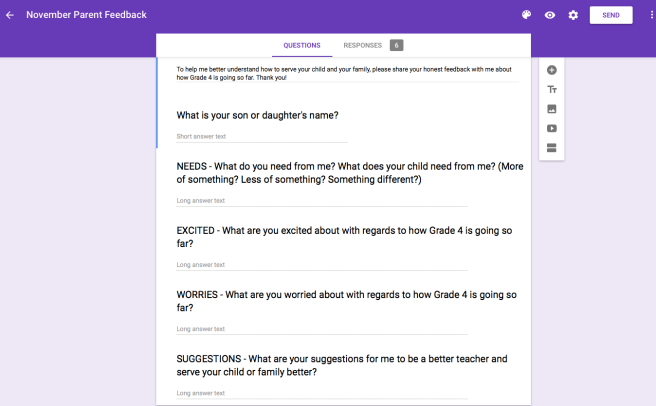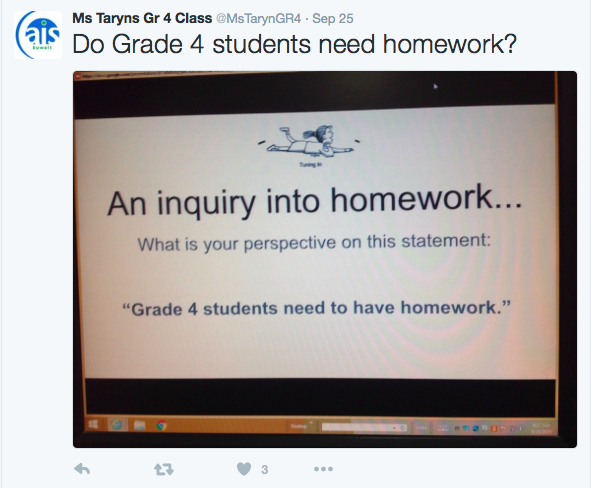
It comes as no surprise that the issue of homework in elementary classrooms is quite the hot topic these days. In thinking about starting my year back in the classroom I decided that I – like many other teachers around the world -was going to outlaw homework!
… then I began to reflect on my decision and wondered if choosing for everyone not to have homework, was any better than choosing for everyone to have homework. Either way you slice it, I as the teacher, was the owner of that decision and that was something I was no longer comfortable with in trying to achieve more democratic classroom.
So I decided to take a collaborative approach and invite students and parents in on the decision making. Here is how it went!
Tuning In
Before delving too deep I wanted to tune into what students already thought about homework. So I posted “agree”, “disagree”, “sometimes” and “I’m not sure” around our classroom and I projected the following quote:
“Homework is essential to learning”
There were a range of responses and as students shared the reasoning behind their opinions, many students shifted from one group to the next.
Provocation
Then I invited students to watch this Alfie Kohn interview to provoke their thinking about homework. They backchannelled throughout the video to share their thoughts, questions and connections.
Finding Out
After that, I told them that they would be deciding if they had homework – together with their families – but in order to make an informed decision we had to explore all the perspectives surrounding homework. To help with this we used to Visible Thinking Routine – Circle of Viewpoints.

Then we divided into teams that would each inquire into a different perspective. Each team had a different approach to collecting data:
The “student” team posted a Twitter poll and collected tallies at recess.
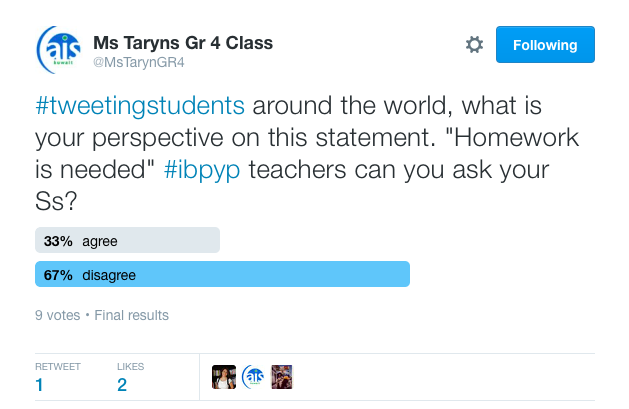
The “parent” team sent a Google Form home to all the parents.
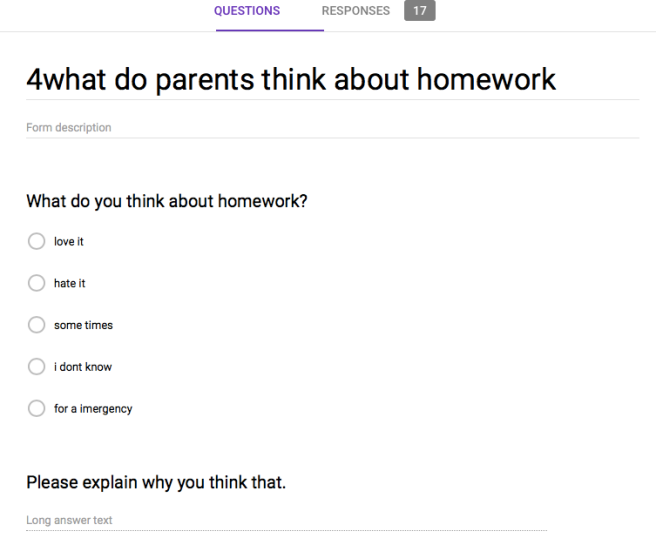

The “teacher” team walked around the school and collected quotes from teachers about homework.
The “administrator” team sent the principal, assistant principal and superintendent an email.
The “media” team explored articles and videos I shared with them.
The “other schools” team browsed this school’s blog about their homework inquiry.
The “our school” team looked at the homework policy in the school handbook.
Sorting Out
Once all the teams had their data they had to go through it and decide what was important, what was worth taking note of and how they were going to consolidate and display it.
Some wrote a summary:
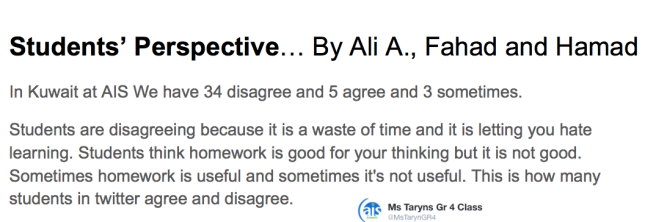
Others used graphs:

Some used statistics:

Others used quotes:
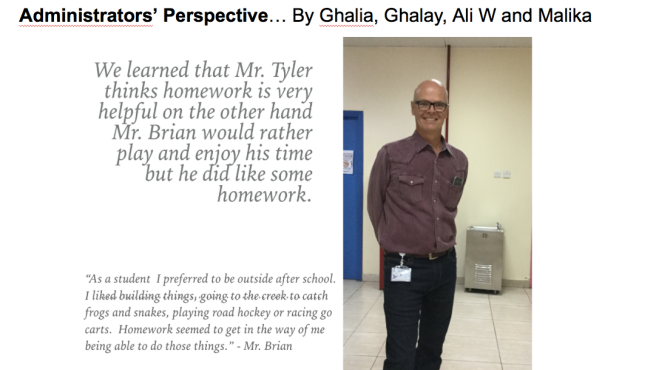
Some used hyeperlinks:

Others used photos:
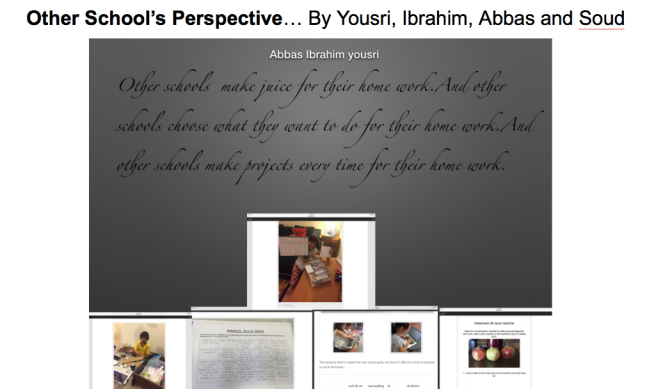
Making Conclusions
Then we put it all together and emailed this Google Slideshow home to our families. From there, families explored all the perspectives together and made a decision about whether or not they wanted homework in Grade 4.
Final results: 9 chose homework 14 chose no homework
Taking Action
I pulled together the 9 students that opted to have homework this year and together we used the Start With Why framework to make a plan.
First students focused on why they wanted homework, then how they wanted it to work, then finally what specifically they would do to accomplish those goals.


Some students made themselves choice boards:


Other students planned out each night of the week:


Next, I provided feedback about their plan and then they brought it home to get feedback from their parents as well.
Now we are finally ready to put these differentiated, student-led, family supported homework plans into action!
My Reflections
- there was so much math and literacy in this inquiry
- it was a great way to explore the concept of perspective
- the format allowed for students to express their discovers using new literacies and multimodalities
- the parents were amazing partners in this inquiry
Now that it is all over, I can rest assured that the students and families who want homework have it and the students and families who don’t want homework don’t have it. Everyone is happy and the ownership and control rests with the learners themselves… as it always should.
